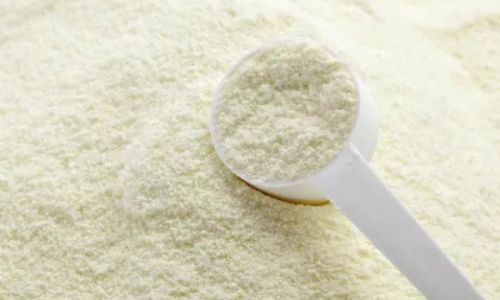Introduction
Cooking pork in a stir-fry is a popular method for preparing this versatile meat, especially in Asian cuisine. Stir-frying pork allows for quick cooking, retaining moisture and flavor while achieving a tender texture. However, the question often arises: how long does it take to cook pork in a stir-fry until it’s fully cooked and safe to eat? Understanding the cooking time for pork stir-fries is crucial for ensuring food safety and achieving the desired taste and texture. This article delves into the various factors that influence cooking time, the different cuts of pork suitable for stir-frying, and practical tips for perfecting your pork stir-fry.

Factors Influencing Cooking Time
Several factors can affect how long it takes to cook pork in a stir-fry. These include the type and cut of pork, the thickness of the slices, the heat level of the pan, the initial temperature of the meat, and the presence of other ingredients in the stir-fry.
Type and Cut of Pork
Different cuts of pork have varying textures and fat contents, which influence their cooking times. For stir-frying, pork shoulder, pork tenderloin, and pork loin are popular choices. Pork shoulder, being relatively fatty, can handle longer cooking times without drying out, while pork tenderloin is leaner and requires careful cooking to avoid overcooking.
- Pork Shoulder: Known for its flavor and marbling, pork shoulder is often used in dishes like carnitas. When sliced thinly, it can be stir-fried for about 5-7 minutes, depending on the thickness of the slices.
- Pork Tenderloin: This lean cut is tender and best suited for quick cooking. Thin slices of pork tenderloin can be cooked in as little as 3-4 minutes.
- Pork Loin: This cut is versatile and can be used for various dishes. Sliced thinly, pork loin takes around 4-6 minutes to cook through.
Thickness of Slices
The thickness of the pork slices plays a significant role in determining cooking time. Thinner slices cook faster and are more prone to overcooking, while thicker slices take longer to cook through and can remain tender if cooked properly.
- Thin Slices (1/8 inch or less): These cook quickly, usually within 3-5 minutes. They are ideal for dishes where a tender, almost velvety texture is desired.
- Medium Slices (1/4 inch): These take around 5-7 minutes to cook through and offer a balance between texture and cooking time.
- Thick Slices (1/2 inch or more): These require longer cooking times, usually 7-10 minutes, to ensure they are cooked through without becoming dry.
Heat Level of the Pan
The temperature of the pan is crucial for stir-frying. A hot pan ensures that the pork sears quickly, locking in juices and flavor. A preheated pan, typically set to medium-high or high heat, is ideal for stir-frying pork.
- Preheated Pan: A pan preheated to medium-high or high heat ensures that the pork cooks evenly and quickly. This helps achieve a nice caramelization on the surface of the meat.
- Maintaining Heat: Once the pork is added to the pan, it’s important to maintain the heat level to ensure consistent cooking. Adjusting the heat as needed can prevent the pork from burning or overcooking.
Initial Temperature of the Meat
The initial temperature of the pork also affects cooking time. Cold meat will take longer to cook than meat that has been allowed to come to room temperature.
- Cold Meat: If the pork is cold from the refrigerator, it will take longer to reach the desired cooking temperature. Allowing the meat to sit at room temperature for about 15-30 minutes before cooking can help reduce cooking time.
- Room Temperature Meat: Pork that is at room temperature cooks more evenly and quickly, as the heat from the pan can penetrate the meat more efficiently.
Presence of Other Ingredients
The ingredients added to the stir-fry can also influence cooking time. Vegetables, sauces, and marinades can affect the cooking process by altering the heat of the pan and the moisture content of the dish.

- Vegetables: Adding vegetables to the stir-fry can lower the overall temperature of the pan, requiring slightly longer cooking times for the pork. However, vegetables also add moisture, which can help keep the pork tender.
- Sauces and Marinades: These can add flavor and moisture to the stir-fry. Marinades can help tenderize the pork, while sauces can be added towards the end of cooking to prevent burning and to coat the pork evenly.
Cooking Techniques for Pork Stir-Fries
To achieve the best results when stir-frying pork, follow these techniques:
Preparation
- Slicing: Slice the pork against the grain for tender results. This helps break down the muscle fibers, making the meat more tender.
- Marinating: Marinating the pork in a mixture of soy sauce, rice vinegar, garlic, ginger, and a touch of sugar can enhance flavor and tenderize the meat. Marinate for at least 30 minutes, preferably longer.
Heating the Pan
- Preheat: Preheat your pan or wok over medium-high to high heat. Use a small amount of oil, such as vegetable or peanut oil, which can tolerate high temperatures without smoking.
- Testing Heat: To test if the pan is hot enough, flick a few drops of water into the pan. If they sizzle and evaporate immediately, the pan is ready.
Stir-Frying
- Adding Pork: Add the pork slices to the hot pan in a single layer, avoiding overcrowding. This ensures that each piece has direct contact with the pan, promoting even cooking.
- Stirring: Stir frequently to prevent sticking and to ensure even cooking. Use a spatula or wok spoon to toss the pork and any vegetables added to the stir-fry.
- Timing: Cook the pork for the recommended time based on the thickness of the slices and the desired doneness. Thinner slices will cook faster, while thicker slices will take longer.
Adding Vegetables
- Timing: Add vegetables that cook quickly, such as bell peppers, snap peas, or broccoli florets, towards the end of cooking the pork. Vegetables that take longer to cook, like carrots or potatoes, should be partially cooked before adding to the stir-fry.
- Stirring: Continue to stir the pork and vegetables together until the vegetables are tender-crisp and the pork is cooked through.
Finishing
- Sauces: Add any finishing sauces, such as soy sauce, oyster sauce, or a mixture of honey and soy sauce, towards the end of cooking to prevent burning and to coat the pork and vegetables evenly.
- Tasting: Taste and adjust seasoning as needed with salt, pepper, or additional sauce.
Serving
- Plating: Serve the stir-fry immediately while hot. Garnish with chopped herbs, such as green onions or cilantro, for added flavor and color.
- Accompaniments: Serve with steamed rice, noodles, or stir-fried vegetables to create a balanced and satisfying meal.
Conclusion
Cooking pork in a stir-fry is a quick and delicious way to prepare this versatile meat. By understanding the factors that influence cooking time, such as the type and cut of pork, the thickness of slices, the heat level of the pan, the initial temperature of the meat, and the presence of other ingredients, you can achieve perfectly cooked pork stir-fries. Proper preparation, heating the pan, stir-frying techniques, and finishing with the right sauces will ensure that your pork stir-fry is tender, juicy, and flavorful. With these tips and techniques, you can enjoy delicious pork stir-fries that are both safe to eat and satisfying to your taste buds.






0 comments